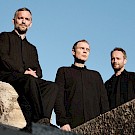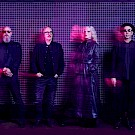
Rarely does a DJ have the mettle to venture away from the dancefloor. Most never really give up the status of being the only thing to look at onstage. As a byproduct, the audience is perhaps enticed to dance due to a lack of any compelling action in front of them. Trentemøller is one of the rare DJs who has owned the stage all to himself, and yet, with each successive album, he manages to acquiesce further into the dynamic of a collective band.
Following wide acclaim for his 2006 debut The Last Resort, the Danish Anders Trentemøller gained fans worldwide for his ambient and atmospheric blend of techno. Since then, he has managed to distance himself considerably from the pure dance-driven aesthetic that gave him his initial fame, perhaps alienating a few fans along the way. Those bitter about the decreasing number of danceable tracks would do well to get over it and acknowledge the darkly powerful sound Trentemøller has been building towards with each new album.
On the 2013 release Lost, the dark and dreamy are blended together, almost akin to a Tim Burton soundtrack. “It is a record defined by its thematic guitars, analog synthesizers and robust melodies; the antithesis to the feel of the programmed, quantized music that some of his most early fans know him for," states Trentemøller’s official biography.
With the current tour closely following the sound of Lost, concertgoers at the Wonder Ballroom on Friday, November 21 will be spared the tepid toying of a single DJ and experience a full accompaniment of musicians casting shadows through sound. While onstage, Trentemøller gives the impression of a conductor leading his band through ever more turbulent soundscapes, often driving hard to escape conformity with piston-like precision. At times the guitar wails, it wanders, but never is it bright and optimistic—the pervading spirit is heavy and unsatisfied. Part psychedelic, part dance, part industrial—all morose.
Never fully losing the DJ ethos of dance, his sound tempts you to break loose in the direction of uninhibited movement, but the overall aesthetic demands a greater attention than that of a sweat-induced frenzy of flailing. Perhaps a compromise can be found in an introspective dance party—one devoid of friends and external motivation. When the pace quickens and the music prompts the physiological-induced perspiration that inevitably results, do not be surprised by the chills as your brain processes the haunting beauty unfolding in front of you.



